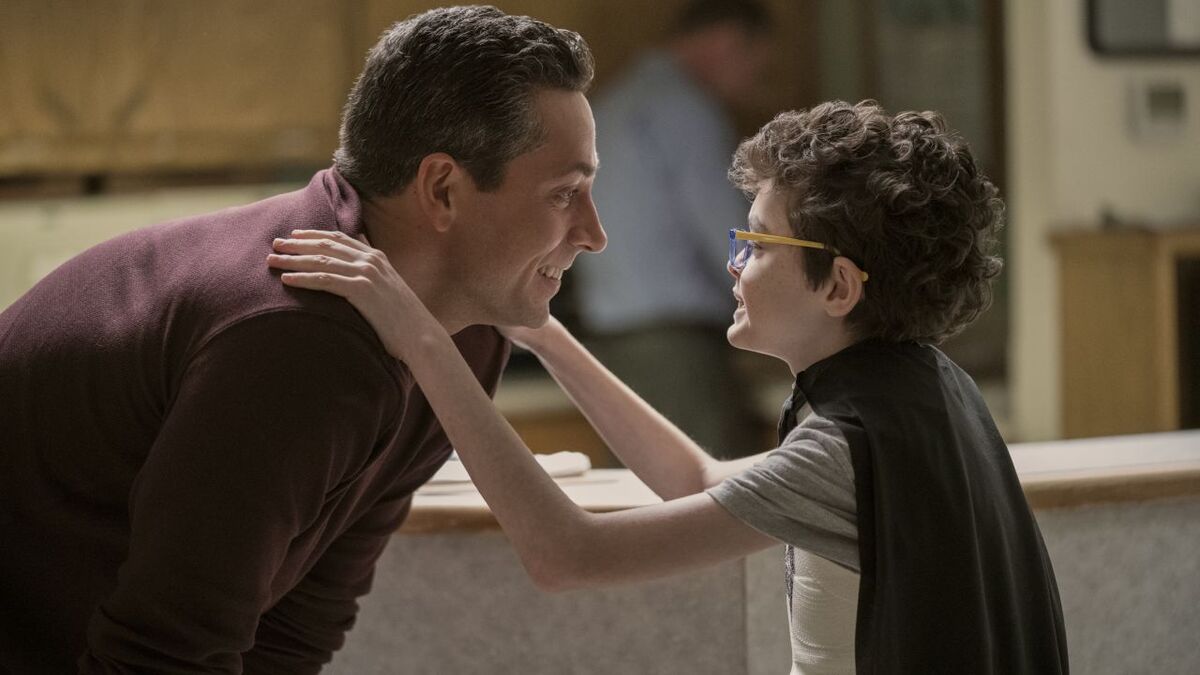
In light of the events of the last week, the second episode of The Knick, “Mr. Paris Shoes,” makes for an unfortunately timely examination of people’s relationship with death and discrimination. While certainly present in the premiere, these themes were only touched on in the hurry to get through all the expositional heavy-lifting required of a TV pilot. Knickerbocker Hospital itself is the title character of the series, but Thackery was our point of ingress to the world of The Knick. To be a series, The Knick will require a fully engaging ensemble, which “Mr. Paris Shoes” does a nice job of laying the groundwork for.
Thackery is another prime example of the cable drama White Male Antihero, the popular blueprint for a protagonist that’s designed to wed audience sympathy with moral ambiguity. Thackery abuses drugs, his subordinates, and himself, but he’s a genius that can keep people from death’s door. Unlike guys like Tony Soprano or Walter White, there’s a romantic progressivism to Thackery. Though his one-man war against mortality is driven as much by ego as it is compassion, each risky procedure he tries has the potential to advance the medical field forward, and save untold lives in the future.
His virtuoso talent and methods pair appropriately with the technical prowess of the show. Visually, there was that detached, airless quality to the pilot that’s come to define a lot of director Steven Soderbergh’s work. In a word, the whole thing was just kinda “cool,” and that’s even when you don’t include the show’s unrelenting gore, and soundtrack by Cliff Martinez. This was all the pilot had to accomplish: make sure you thought The Knick’s main character and his world were interesting enough to get you to came back and watch the show again tonight.
“Mr. Paris Shoes” takes an equally critical second step for the series, and starts building out the characters of The Knick that aren’t Thackery. The show’s star does indeed get the (literally) flashiest moment of the episode, but what Jack Amiel and Michael Begler have done with their second hour is convince us there’s a whole season’s worth of material here. Last week successfully introduced us to the more than half-dozen supporting players that occupy Knickerbocker Hospital, but it’s only after tonight that we’ve gotten a sense for their lives and roles both within the hospital, and outside it.
The opening sequence that crosscuts the morning routines of Cornelia and Dr. Edwards proves from the get-go that the social elements used to generate conflict in the pilot aren’t going away anytime soon. The Knick, like a lot of great period dramas, operates in the space where haves and have-nots intersect. The terrific long take that showcases all the employees coming in for the day’s work demonstrates how, once they pass through the front gates of the hospital, the external lives of the doctors and staff cease to exist. At least, they’re supposed to. “Mr. Paris Shoes” explores the walls the Knickerbocker’s staff try to maintain between their work life and home life, and just how poor their masonry is.
Seeing Edwards wakeup in a roach-infested, overcrowded boarding house with rust-tainted water would be enough of a visual to contrast his life against Cornelia’s, which is all satin sheets and attending maids. What’s impressive about the episode’s opening sequence is that it doesn’t just call it quits there. Edwards, as a black man, and Cornelia, as a woman, come from the same world of underdogs trying to crave out a place for themselves in a society run by white men, but the two occupy different hemispheres of that world all the same.
Edwards had to study and struggle to gain the authority that everyone at the Knickerbocker wants to deny him. Cornelia, on the other hand, inherited it from her father, Captain Robertson. As much as it’s encouraging to see The Captain express his every confidence in his daughter, while acknowledging that anatomy is what’s keeping her from the respect she deserves, the very nature of their relationship is an inequitable one. With new money comes new privilege. Her hands are connected to her father’s purse strings, and ultimately, that more than her tenacity and business acumen is what gives her power.
Cornelia at least gets to do her job. Resigned to one of the hospital’s decrepit basements, emerging to give stitches to patients who sneer at him, Edwards is a man without a country. Thackery and Gallinger delight in taunting him when making the rounds at the hospital, and Edwards’ upper-class dress makes him an outlier in the working class Tenderloin District he goes home to. He’s got Cornelia in his corner, but her understanding of the obstacles he’s up against is laughably out of touch. “I expect these things. You’re upset because you don’t,” he tells her when she visits his “office.” It’s not clear yet why the Robertsons are so intent on making Edwards a part of the hospital, but so far all they’ve done is throw him to the lions armed only with a title.










Published: Aug 15, 2014 10:00 pm